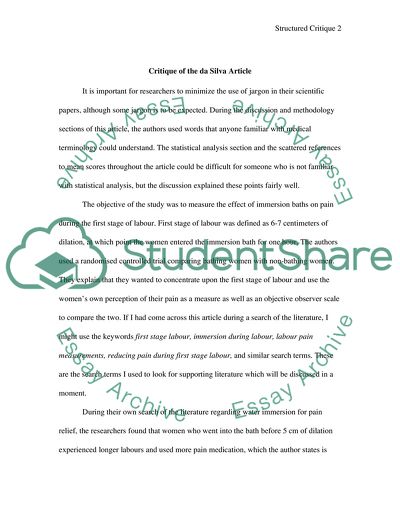Cite this document
(The Effect of Immersion Bath on Labour Pain Book Report/Review, n.d.)
The Effect of Immersion Bath on Labour Pain Book Report/Review. Retrieved from https://studentshare.org/human-resources/1727414-a-structured-critique-of-research-article-a-randomised-controlled-trial-evaluating-the-eimmersion-ffect-of-bath-on-labour-pain
The Effect of Immersion Bath on Labour Pain Book Report/Review. Retrieved from https://studentshare.org/human-resources/1727414-a-structured-critique-of-research-article-a-randomised-controlled-trial-evaluating-the-eimmersion-ffect-of-bath-on-labour-pain
(The Effect of Immersion Bath on Labour Pain Book Report/Review)
The Effect of Immersion Bath on Labour Pain Book Report/Review. https://studentshare.org/human-resources/1727414-a-structured-critique-of-research-article-a-randomised-controlled-trial-evaluating-the-eimmersion-ffect-of-bath-on-labour-pain.
The Effect of Immersion Bath on Labour Pain Book Report/Review. https://studentshare.org/human-resources/1727414-a-structured-critique-of-research-article-a-randomised-controlled-trial-evaluating-the-eimmersion-ffect-of-bath-on-labour-pain.
“The Effect of Immersion Bath on Labour Pain Book Report/Review”, n.d. https://studentshare.org/human-resources/1727414-a-structured-critique-of-research-article-a-randomised-controlled-trial-evaluating-the-eimmersion-ffect-of-bath-on-labour-pain.


